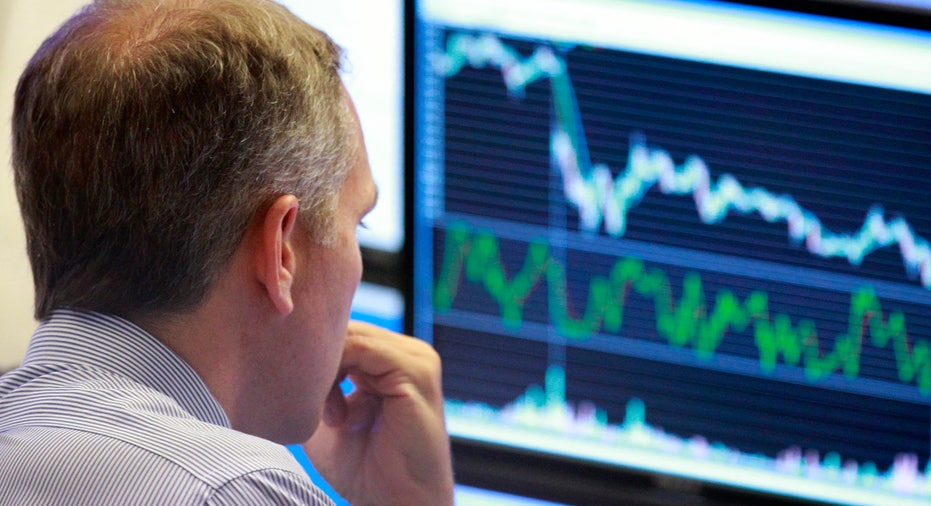As Turbulence Persists, Volatility Morphs Into an Asset Class

In a fresh sign of how investors have adapted to the chaotic world they now live in, volatility, once thought of as a simple hedge, has begun to transform into its own asset class.
The increased popularity of volatility is exemplified by the fact that there are about $2.6 billion in assets under management in exchange-traded products tied to the VIX index, according to ConvergEx, a trading-software company partly owned by Bank of New York Mellon (NYSE:BNY).
“People are so hungry for an asset class that can help hedge that they are now looking at volatility as an asset class. Maybe it’s the modern version of gold,” said Nicholas Colas, chief market strategist at ConvergEx.
Dubbed the markets’ fear gauge, the VIX, or more formally the Chicago Board Options Exchange Market Volatility Index, measures the implied volatility of S&P 500 index options.
Searching for Diversification
The value of the VIX as a hedge lies in its tendency to increase in value as the markets undergo heavy selling pressure. However, volatility doesn’t necessarily have to move in the opposition direction of equities.
“Trading volatility is really a way of simplifying strategy and hedging positions at the same time,” said Peter Kenny, managing director at Knight Capital Group. “Generally, volatility is agnostic. So you can bet on a one-off like volatility and not really be concerned about fundamentals or even technicals. It removes the science from the equation and allows you to simply bet on emotion.”
According to ConvergEx, there are more than 30 exchange-traded products that are in some way linked to the VIX. As of last week, these ETPs had about $2.6 billion of assets under management, representing 2.4% of all capital invested in U.S. listed exchange traded funds and similar products. Market participants have the option of investing in both “Long VIX” and “Short VIX” products.
The popularity of VIX products seems to be tied to a desire to further diversify portfolios in an increasingly interconnected world.
“People recognize that correlation has gone up across asset classes,” said Colas. “The only thing that is going to have negative correlation reliably is the VIX.”
"It removes the science from the equation and allows you to simply bet on emotion.”
’08 Experience Looms
The correlation across asset classes was on full display three years ago during the scary financial crisis. Nearly all asset classes, sometimes even including gold, plunged in value as investors liquidated positions in a dramatic flight to safety triggered by the collapse of Lehman Brothers. That fall, it didn’t matter if investors parked their cash in defensive stocks like utilities or corporate bonds, they would suffer losses.
However, as the Dow Jones Industrial Average plummeted below 8000, the VIX surged from as low as $15.82 in May 2008 to as high as $89.53 in October 2008 before Congress (eventually) passed the $700 billion TARP bailout.
“There’s no question the whole perception of ‘vol’ being a traded opportunity was born in the 2008 meltdown,” said Kenny. “Ninety-nine out of 100 people -- even on the Street -- did not pay attention to volatility like they do today. It’s one of the most frequently looked at or gauged indexes today.”
The most popular product now is the iPath S&P 500 VIX Short-Term Futures ETN (ticker symbol “VXX”), which has $1.1 billion of assets under management, or 42% of the total in VIX products, ConvergEx said.
Downsides to VIX ETFs?
It seems likely volatility products will play a bigger role in portfolios in the months ahead as the financial markets are still subject to extreme turbulence, underscored by the Dow’s 249-point tumble on Monday, the never-ending European sovereign debt mess and continued political paralysis in Washington.
“I think you’re in for a period of time where volatility will be elevated. The volatility of a volatility will be very high,” said Colas.
VIX-based products are hardly perfect. One challenge is tied to the fact that the VIX is a futures contract, which by definition, expires. That means that VIX ETFs need to keep buying new contracts at uncertain prices, creating an unwanted fluctuation in prices that can dramatically increase or decrease returns.
“The next iteration will have to offer greater price stability even as they try to shield investors from the next rainstorm,” Colas wrote in a note.